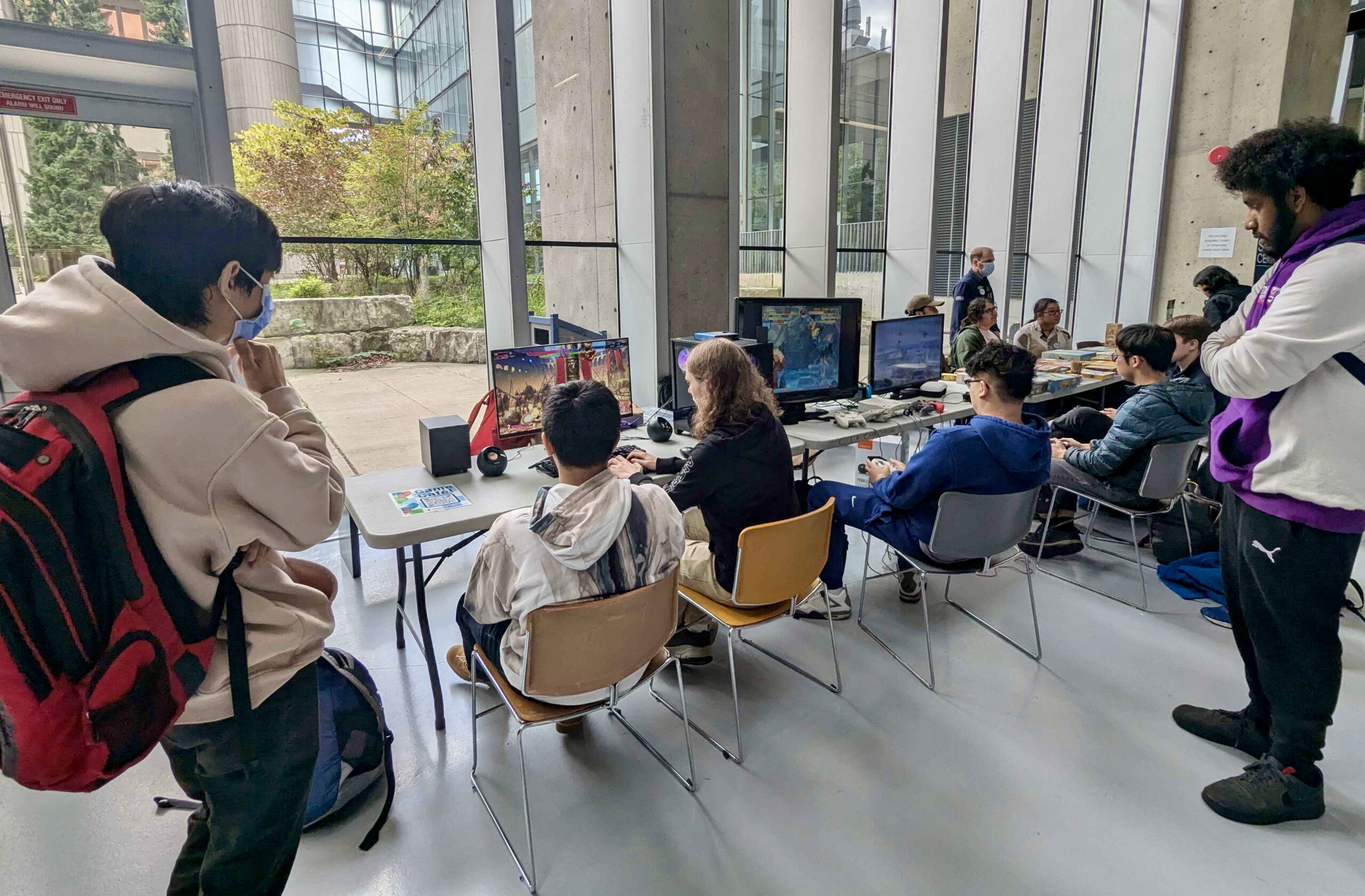“Are E-sports real sports?”: An interview with UTM’s E-Sports Club
The UTM E-sports club answers the most frequently asked questions and debunks myths about the world of e-sports.
The UTM E-Sports Club aims to provide a place for video game lovers to bond and explore their common interest together.
In an interview with The Medium, UTM E-Sports Club executives, Vice-President Philo Sidhom, Events Coordinator Matthew Ganotisi, and Treasurer Marc Lunar introduce the club and dive deep into the hot topic, “Are e-sports real sports?”
How the UTM E-Sports Club works
The UTM Esports Club is a student group that focuses on casual and competitive video games. On their casual side, the club provides a space for video game lovers to relax and discuss games.
On their competitive side, however, the club has collegiate teams for games like Valorant and League of Legends. The club also hosts tournaments for fighting games like Smash and Street Fighter.
Unlike traditional sports, e-sports don’t have a one-size-fits-all rulebook. Instead, their scoring systems, training, and formation of teams are highly dependent on the nature of the games themselves.
E-sports training can be broken down into different categories. “You can practice games against players from other teams,” said Lunar, “as well as between players in your teams.” Players can also have one-on-one sessions with coaches and watch recordings of their previous gameplay. Coaches then analyze a player strengths and weaknesses, and work to improve their mechanics.
Surprisingly, e-sports coaches aren’t always professionals or top players. “Sometimes, they just happen to have a really good mind for the game,” Lunar explained.
“Take League of Legends as an example. They know about which items are good on which champions.” Additionally, good coaches also have the knowledge of which team setups are an optimal to win games depending on the situation.
“I think one of the things that stands out about e-sports is just the way that you approach strategy,” Ganotisi explained. “People are constantly finding new ways to strategize around, say, for example, specific game mechanics or exploits of game engines.”
Even for games that have been around for a decade or two, players can still find new things to learn and develop the full potential of characters that were not as popular in the past.
Similarities and differences between Esports and traditional sports
Aside from their shared competitiveness and coaching sessions, the mental fortitude required for e-sports players is just as demanding as for traditional athletes.
“I think both e-sports and real sports do heavily depend on your mentality and how focused you are on what you’re doing,” shares Sidhom.
According to Sidhom, the main difference between e-sports and traditional sports lies in their different proportions of mental and physical energy usage.
“Obviously,” began Lunar, “physical sports have a higher physical barrier and physical demand to it, as opposed to e-sports, which is mostly mental.”
Debunking the biggest misconception about e-sports
While some people might believe that e-sports are easy or that becoming a professional e-sports player doesn’t require much commitment, the UTM E-Sports Club revealed a much different truth.
“You have to realize that millions and millions of people are playing these games,” says Lunar. “To be the best of the best, you have to be in the top 0.1% of all those players.”
Although anyone can participate in e-sports, it requires as much effort as traditional sports would take to become a professional player.
Sidhom suggests that joining tournaments and getting involved in local e-sports communities are a great way to meet players and become more immersed in the e-sports world. Watching competitive sets, YouTube analysis videos, or livestreams are other ways new players can learn more about e-sports and develop their skills.
Answering the big question
Sidhom, Ganotisi and Lunar all agree that e-sports are real sports.
“I think it depends on how you define sports,” explained Lunar. “Some organizations would define sports as a purely physical thing. But then you look at sports, say, Formula One driving. Obviously, there is a physical aspect to it.”
“Activities that have large mental demands, such as chess, are getting recognized as real sports,” added Sidhom. “I think for anything, as long as there’s a competitiveness for it, it can be considered a real sport depending on how popular it is.”

